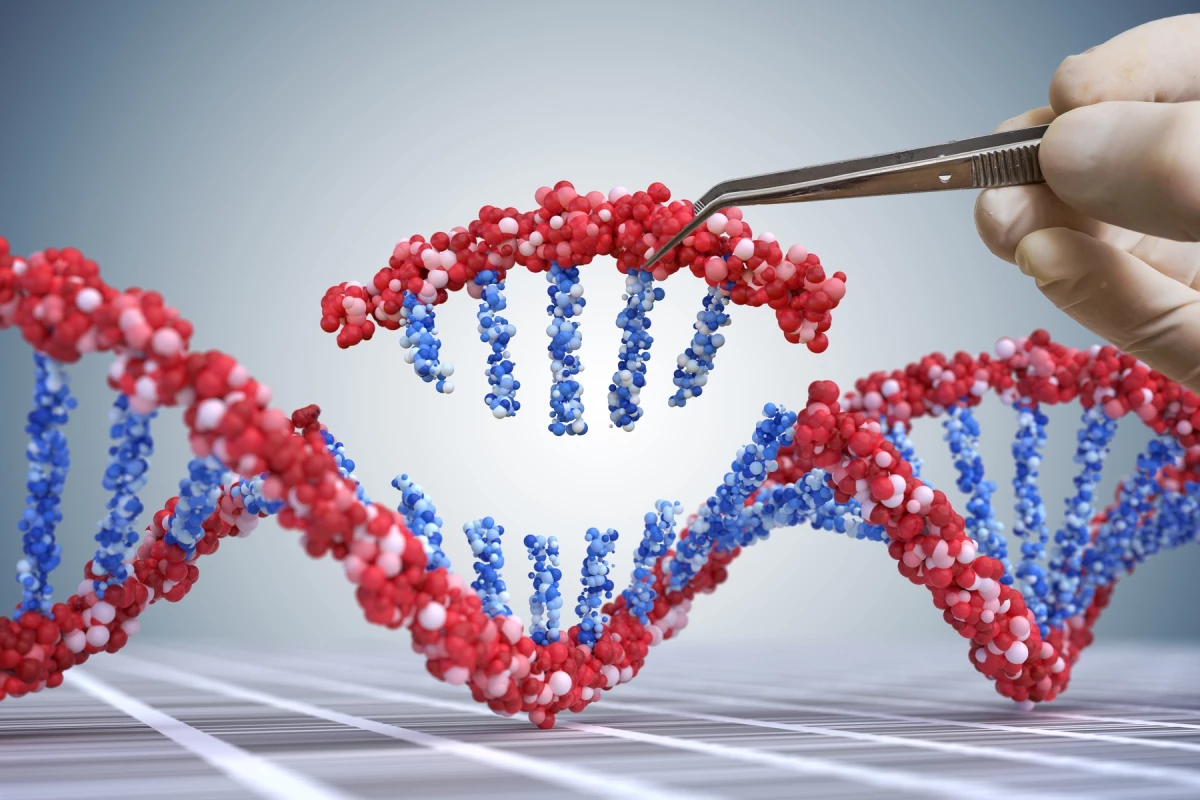A new technique has been added to the CRISPR gene-editing toolbox. Known as PASTE, the system uses virus enzymes to “drag-and-drop” large sections of DNA into a genome, which could help treat a range of genetic diseases.
The CRISPR system originated in bacteria, which used it as a defense mechanism against viruses that prey on them. Essentially, if a bacterium survived a viral infection, it would use CRISPR enzymes to snip out a small segment of the virus DNA, and use that to remind itself how to fight off future infections of that virus.
Over the past few decades, scientists adapted this system into a powerful tool for genetic engineering. The CRISPR system consists of an enzyme, usually one called Cas9, which cuts DNA, and a short RNA sequence that guides the system to make this cut in the right section of the genome. This can be used to snip out problematic genes, such as those that cause disease, and can substitute them with other, more beneficial genes. The problem is that this process involves breaking both strands of DNA, which can be difficult for the cell to patch back up as intended, leading to unintended alterations and higher risks of cancer in edited cells.
So MIT researchers set out to develop a new version of the tool that was more gentle on the genome. Rather than the “cut-and-paste” method of existing CRISPR-Cas9, the team describes the new method as more of a “drag-and-drop” system. PASTE, which stands for Programmable Addition via Site-specific Targeting Elements, still uses a Cas9 enzyme to cut DNA in a location specified by guide RNA, but the difference is that the new system cuts one strand and then the other, rather than both at once.
Insertion of the new genes is handled by enzymes called serine integrases, which are used by viruses to infect bacteria and insert their DNA into the target’s genome – ironic, given CRISPR’s origins as bacteria’s defense against these exact attacks. These integrases naturally seek out specific sequences in the target genome, so after the PASTE system makes its gentle cut it inserts the small “landing site” sequence that the integrases are looking for. Finally, the integrase inserts its DNA payload into the genome at that site.
In a series of tests the team put the PASTE system to work in human liver cells, T cells and lymphoblasts, inserting 13 different genes into nine locations in the genome. The success rate was up to 60%, and generated very few errors at the site of insertion. Tests in mice with “humanized” livers only worked in about 2.5% of cells, however.
Not only is this technique more gentle and potentially safer, but the team says it was able to insert huge amounts of DNA at once – up to 36,000 base pairs in tests. This could make it particularly useful for replacing defective genes such as those that cause cystic fibrosis or Huntington’s disease.
“It’s a new genetic way of potentially targeting these really hard-to-treat diseases,” said Omar Abudayyeh, senior author of the study. “We wanted to work toward what gene therapy was supposed to do at its original inception, which is to replace genes, not just correct individual mutations.”
While there’s still plenty of work left to improve PASTE before it could be put to work treating these diseases, there’s no shortage of other gentle variations on CRISPR in development. That includes CRISPR-Combo, MAGESTIC, RLR, and systems using bacteriophages or jumping genes.
The new research was published in the journal Nature Biotechnology.
Source: MIT




